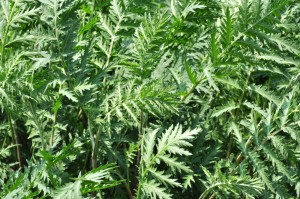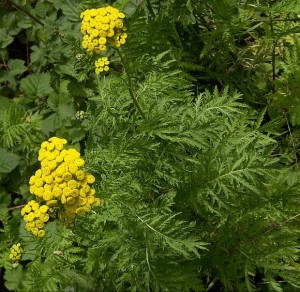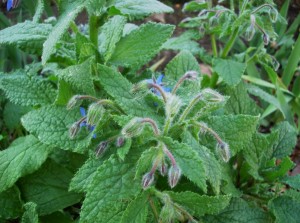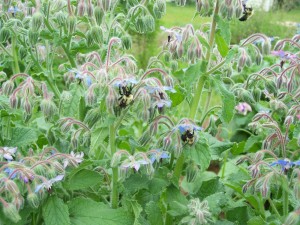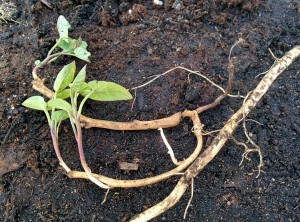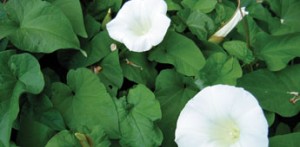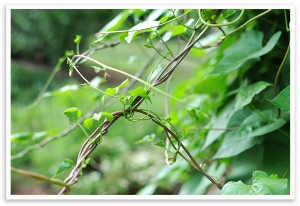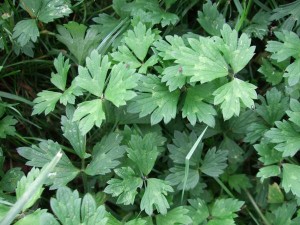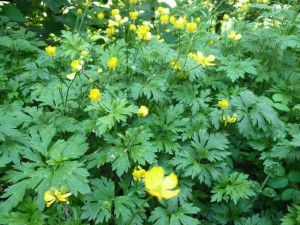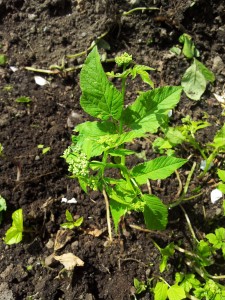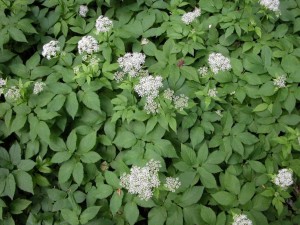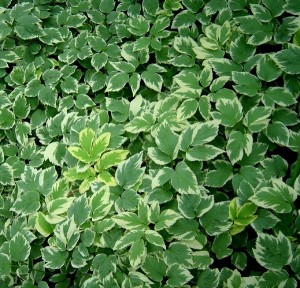Gardening Tips – plant info
Beneficial flowering plants: some plants should be encouraged to grow in and around the gardens as they help attract beneficial insects that enhance garden health and growth. One plant that is particularly good at this is Tansy as it attracts ladybugs, lacewings and other insects that prey on aphids.
*** Please leave Tansy plants intact, do not remove them from the garden area. ***
Tansy photos:
Other beneficial flowering plants include the “White Sensation” variety of cosmos, and herbs such as caraway and dill.
Marigolds have a pungent odor that could be responsible for keeping bugs away and they are said to be beneficial to any kind of vegetable. It’s also thought that excretions from their roots kill nematodes in the soil.
Companion planting: Certain vegetables and flowers just seem to grow better when planted together, and this provides another way to enhance an organic garden. Companion planting can cut down the need to add fertilizer or use pesticides in the garden, and can also help improve yields and draw off insect pests. Here is one source for further information: http://www.companionplanting.net/
Borage: This plant is easy to grow from seed and blooms fairly steadily up until frost. Bees and other pollinators are attracted to its bright blue flowers and will be happy to visit your other plants while they’re in the garden!
Borage photos:
Pesky Varmints…aka Invasive Plants
Morning Glory [Bindweed]
Although it has attractive flowers, the species of morning glories found in Maple Gardens develops deep thick roots and tends to hide amongst existing plants and along the fence line where they are less disturbed. They quickly spread by way of long, creeping stems. By crowding out, twining around, blanketing and smothering other plants, Morning Glory presents a serious invasive weed problem.
If left to grow unattended, the deep roots and invasive vines of Morning Glory will take over and strangle all the plants in the vicinity. The vine turns a soft burgundy colour as it matures and the defined, pointed leaves are easy to recognize [similar shape to bean plant leaves]. Morning Glory primarily spreads by underground roots and rhizome stems, see roots photo below. If the tiniest bit of root matter is left in the ground, new seedlings will spring right back up.
*** Please remove Morning Glory immediately. Dig as deep under the roots as possible to remove as much of the root system as possible to prevent the plant spreading to other plots in the garden. DO NOT PUT MORNING GLORY IN GARDEN COMPOSTERS as they are not able to destroy the weed seeds. Put in the garbage or City compost. ***
Morning Glory photos:
Creeping Buttercup
A common perennial weed that depletes the soil of potassium and other nutrients. It spreads rapidly and has dense foliage of dark green leaves divided into 3 leaflets with small bright yellow flowers. Like Morning Glory, Creeping Buttercup tends to hide amongst existing plants and along the plot borders and fence line where it is less disturbed.
When removing buttercup, try to dig all the way under the plant and gently loosen the soil around the roots to get the entire plant out, roots and all [cutting the roots generates another plant].
*** Please remove Creeping Buttercup immediately. Dig as deep under the roots as possible to remove as much of the root system as possible to prevent the plant spreading to other plots in the garden. DO NOT PUT BUTTERCUP IN GARDEN COMPOSTERS as they are not able to destroy the weed seeds. Put in the garbage or City compost. ***
Creeping Buttercup photos:
Goutweed [Bishop’s weed, Snow-In-The-Mountain, Ground Elder]
Goutweed is a perennial in the parsley family that is drought tolerant, flourishes in full sun to heavy shade and tolerates any kind of soil. It will choke out anything, including weeds, and yet does not seem to grow into lawn turf. This is why it continues to be sold in garden centers as a deep, solid groundcover for underneath trees or no-maintenance garden beds. The variegated version with white and green leaves is called Snow-In-The-Mountain.
Like Morning Glory and Creeping Buttercup, Goutweed is an invasive and aggressive plant that is difficult to eradicate as it spreads through a strong underground roots system with rhizome stems. The smallest piece of creeping rootstock left in the ground will quickly form a sturdy new plant colony. The all-green Goutweed found in Maple Community Garden areas tends to be more persistent and spread more rapidly.
*** Please remove Goutweed [Bishop’s weed, Snow-In-The-Mountain, Ground Elder] immediately. Dig as deep under the roots as possible to remove as much of the root system as possible to prevent the plant spreading to other plots in the garden. DO NOT PUT GOUTWEED IN GARDEN COMPOSTERS as they are not able to destroy the weed seeds. Put in the garbage or City compost. ***
Goutweed photos:

